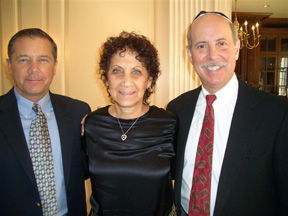The Difference between Strength and Power
In the Martial Arts
 Strength is raw, unfiltered, relatively unfocused ability to move other objects.
Strength is raw, unfiltered, relatively unfocused ability to move other objects.
Strength training involves some technique, but does not take high-level refinement into consideration
For the individual, strength has a sunset, after which it will wane. Power, based on core principles, core use, relaxation, understanding, maturity, refinement of technique, can grow and progress throughout a person’s lifetime. With continued practice and application, there should be no sunset.
Strength is a blunt instrument; power often involves refinement and awareness.
Strength can be isolated to individual muscle groups. It can involve multiple groups, but emphasis isn’t usually on coordination of groups.
Power generated is a function of combined activations. Because these activations can be multiplicative, power can progress in a geometric, rather than an arithmetic fashion.
Power takes time into consideration.
Power is efficient. Antagonistic musculature is at peace and relaxed. With growing understanding resulting from continued practice and application, it continues to improve. At its high end, power manifests as profound energy, issued without effort. It is spontaneous in appearance, and appropriate to the challenge.
Power in the Martial Arts involves relaxation. As it matures, it moves toward effortless force.
Power involves concepts of focus and issuing of energy; whereas strength involves effort.
Power generation involves the best use of our intelligent functions. Strength is more basic, and need not rely on deep understanding.
Power involves root, legs, hips, waist, spine, intercostals and shoulders. It involves compression, rotation and core coordination. It involves the breath, the center, the mind and the spirit.
Power is a product of mind-body interaction. Strength need not be so.
Power involves “settling”, compressing and relaxing. On expression of power, force is relaxed and naturally flowing…. until the moment of contact. The contact extends through the target, but leaves the energy in the target, in a “relaxed-compressed-relaxed” sequence.
Power uses tension-structure simultaneously with relaxation. Structure begins with the ground. The ground provides limitless potential force, when the practitioner can connect and tap into it.
Expression of power ties the extremities to the torso, and the torso to the ground, like the links in a chain, or the struts in a Gothic cathedral. Its expression is as forceful as the weakest link. Strength may be the expression of a single unit in that chain.
Power is best expressed relaxed. Issuing of energy/expressing power is an enjoyable experience, whereas use of strength is effortful and fatiguing.
Power is expressed without telegraphing, and can be rapidly manifested, since the practitioner is relaxed and maximally alert. The evolution does not take up all the practitioners’ attention or energy, and as a result he remains fully aware and responsive to the remainder of his environment.
Power can be manifested at very short/nonexistent distances. Strength needs wind-up or lead-in.
Power is directly related to sensitivity and listening skills, coupled with relaxation. Strength has a mind of its own.
Stiffness can be part of strength use; it cannot be part of issuance of power.
Power generation will involve shaking, or contraction/expansion, hip activation, breath control, internal movement. Strength will involve external movement and effort.
Paul Haydu
December 14, 2009


